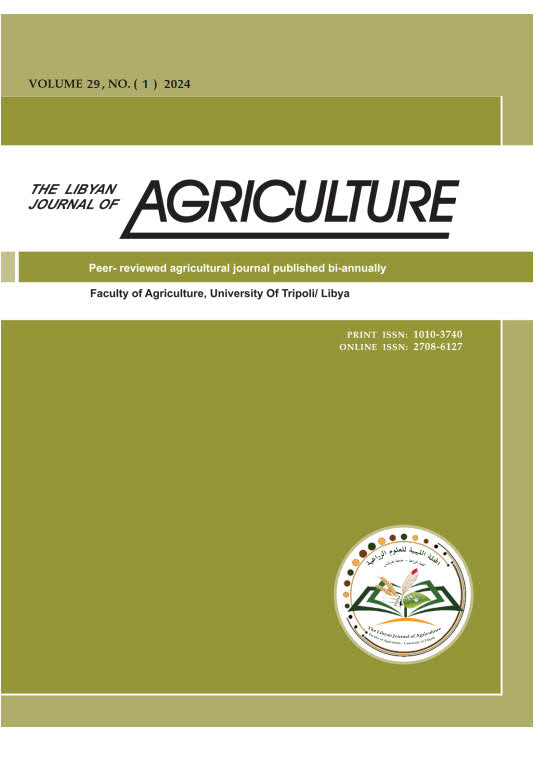The effect of field planning models in the tillage process on field capacity and field efficiency
Main Article Content
Abstract
Tillage is one of the most important field preparation operations for agriculture. The methods of tilling with plows vary depending on the type of soil and the type of crop to be planted. Additionally, the method of tractor entry and exit during the tillage process depends on the shape and dimensions of the field. Therefore, planning the tillage process and selecting the optimal model and method contribute to reducing lost time during turning and ineffective movements, decreasing the amount of fuel consumed by the tractor, reducing soil surface compaction, especially at the field edges, and increasing the field efficiency of the machinery. This study was conducted at the research and experimental stations of the Faculty of Agriculture at the University of Tripoli to compare two methods of field entry: the perimeter method and the sequential method, in terms of field efficiency, theoretical and actual field capacity, using two speeds (3.99 and 5 km/hour). The experiment site was divided into four fields with dimensions of 50 m × 56 m each. A Jada 435 tractor with a mechanical power of 75 horsepower, equipped with a seven-disc vertical plow, was used in this experiment. In both methods, the number of passes, effective time (actual tillage time), and ineffective time (lost time on headlands) were calculated, as well as the lost distance on headlands. From these, field efficiency, theoretical, and actual field capacity were calculated. The results showed that the use of the sequential tillage method (dividing the field into strips) increased field efficiency compared to the perimeter tillage method, at both low and high speeds. It was also observed that field efficiency decreased when using the higher speed in both methods, where it dropped from 66% to 60% with the sequential method, and from 57.0% to 50.7% with the perimeter method. Regarding actual field capacity, the sequential method outperformed, reaching 0.39 hectares/hour at low speed, compared to the perimeter method, which had a field capacity of 0.38 hectares/hour even at high speed. This leads to a reduction in the power required for the agricultural operation, thereby reducing the fuel consumption rate per unit area.

